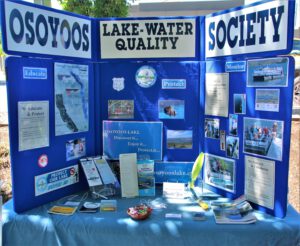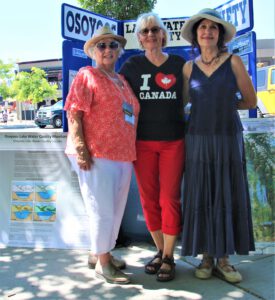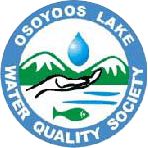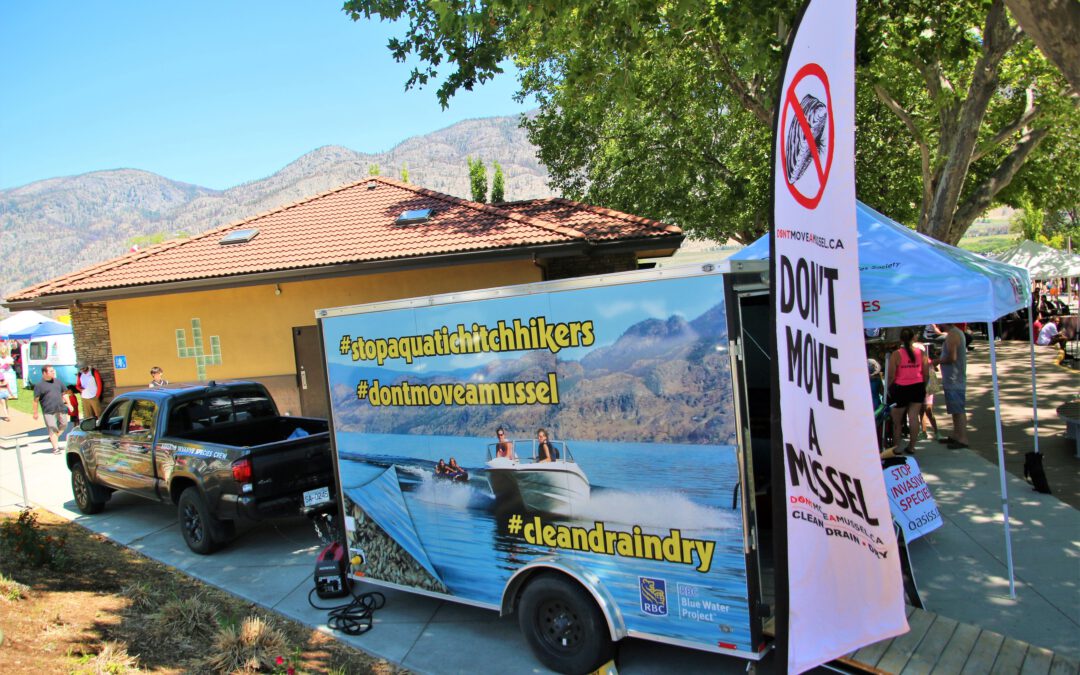Osoyoos Lake mussel query shows public education working
INVASIVE MUSSEL SCARE

Enjoying a sunny summer day snorkelling and relaxing at the beach with her son, Azjder-Rae Leigh spotted something that set off an alarm bell in her head. Looking down she saw a shell in the water not connected to anything that looked damaged but still alive. Her immediate thought was that it could be an invasive mussel, the kind dreaded by marine biologists and others on the front lines desperately trying to keep the Okanagan free of invasive Zebra and Quagga Mussels. Leigh says she spotted the mussel about five metres from shore on Cottonwood Beach, across the road from Sage Pub. It was near the swimming boundary line right near Poplars Motel, on the swimming side she explains. “I have previously seen broken pieces of the same type of shell on the same beach over a month ago,” she added. “I don’t really keep an eye out for these things,” she chuckles. “We were just snorkelling and having fun with my son and I happened to see it and picked it up I thought I don’t know what this is.” What she did next made volunteers at the local Osoyoos Lake Water Quality Board (OLWQB) very happy. She took a picture, explained where she found it and emailed it to the OLWQB. As it turns out it wasn’t an invasive species and for Birgit Arnstein, President of the OLWQB this was a win on multiple fronts. “We were thrilled to receive this email from this concerned citizen because it speaks to the fact that people are paying attention and are beginning to think about invasive muscles. “And of course, we’re thrilled that that wasn’t invasive muscle,” Arnstein hastens to add. “That is absolutely wonderful news!” She’s hopeful that this is evidence that the public education the society has been doing for years is gaining traction. The group recently held a fundraising BBQ with the support of Buy-Low and Arnstein notes that many people are still not aware of the threat from invasive mussels. “A lot of people don’t know that you can carry invasive mussel on a hip wader, on a boot, or on a floaty. And we were able to spread that information at the BBQ she says, adding “Any public education is good it’s a positive thing.”

Scott said it is a native mussel referred to as a “floater” of which there are a few different species. From the photos alone she was not able to pinpoint which one it was. She also noted that she recently had a similar report from Vaseux Lake. Meanwhile, for Leigh and her eight-year-old son, it’s been a great learning moment and one that will spur them on to keep a sharp eye open for invasive mussels. “I understand invasive species and why they want to keep them out, but I wasn’t aware that we had mussels originally in our lake that aren’t invasive. So that’s brand new information for me.” She adds: “I think it’s kind of neat because my son just turned eight today so it’s a learning experience for him too.” Invasive mussels have invaded over 700 lakes and rivers throughout Canada and the US since they arrived in the Great Lakes in the 1980s, but they are not yet in British Columbia. Originally native to Black Sea and Caspian Sea regions of Eurasia the Zebra and Quagga mussels arrived in North America via the ballast water of ocean vessels.
BC’s aquatic ecosystems, salmon populations, hydropower stations and other infrastructure facilities would all be impacted. Zebra and quagga mussels can significantly change aquatic food webs and this could lead to the collapse of valuable native fish populations in BC, such as sockeye salmon. A recent provincial report suggests a zebra or quagga mussel infestation would cost the province $64-129 million a year in lost revenue, added maintenance of water and power infrastructure, and ecological damage. In the Great Lakes where the problem first surfaced, the estimated annual cost exceeds $500 million. In 2015, the mussel inspection program started and each year since inspectors have intercepted mussel-fouled watercraft on their way into BC. These inspection efforts in the Okanagan include a specialized Aquatic Invasive Species K9 unit with two mussel-sniffing dogs – Kilo and Major – trained to detect the zebra and quagga mussels.

The Okanagan Basin Water Board’s Okanagan WaterWise outreach and education program is focused on its “Don’t Move A Mussel” campaign (DontMoveAMussel.ca). This includes its Clean, Drain and Dry campaign for watercraft.
- Clean off all plants, animals and mud from your watercraft and related equipment (e.g. boots, waders, fishing gear). If a power washing station is available, use it.
- Drain (on dry land) any item that can hold water (e.g. buckets, wells, bilge and ballast).
- Dry all items completely before launching your watercraft into another body of water.
Identifying zebra and quagga mussels:
- Range in size from 1 mm to 3 cm (1 inch) as adults
- Have propeller-shaped shells
- Are brown or cream-coloured, and may have zebra stripes
- Often form groups or clumps

Our fabulous booth chocked full of must know information about how the OLWQS Educates, Protects and Monitors Osoyoos Lake.

A trio of hard working volunteers manned our information table with smiles and important knowledge to share with the public. (l-r) Jennifer Morton, Elise Petersen and Barb Stevens. Thank you ladies!


